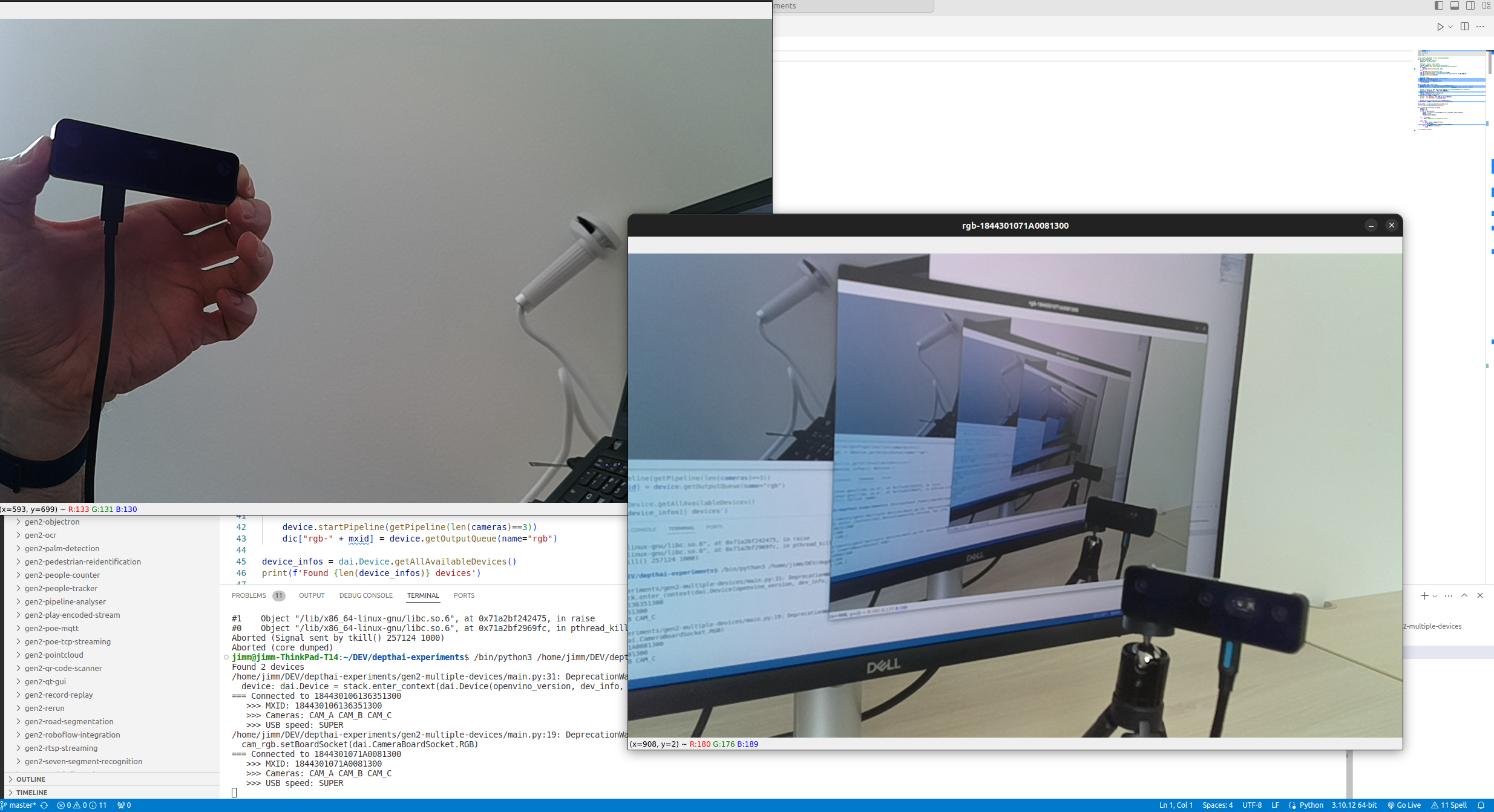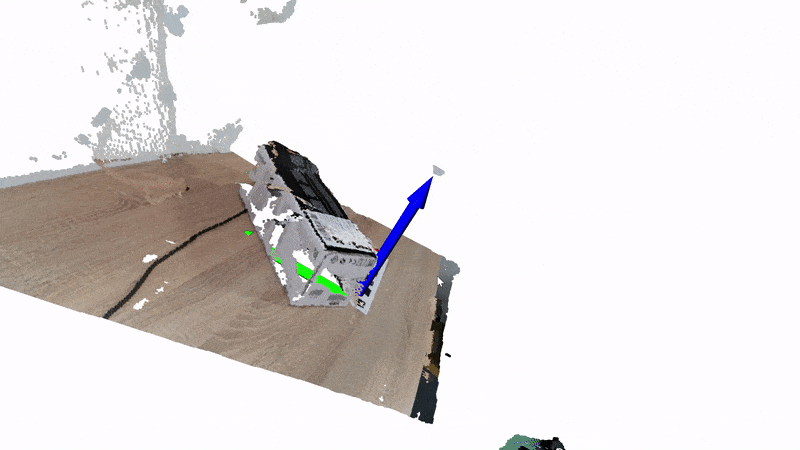Multi-Device Setup

Discovering OAK cameras
MxIDs (unique identifier) and their XLink state.Python
1import depthai
2for device in depthai.Device.getAllAvailableDevices():
3 print(f"{device.getMxId()} {device.state}")Command Line
114442C10D13EABCE00 XLinkDeviceState.X_LINK_UNBOOTED
214442C1071659ACD00 XLinkDeviceState.X_LINK_UNBOOTEDSelecting a Specific DepthAI device to be used
Python
1# Specify MXID, IP Address or USB path
2device_info = depthai.DeviceInfo("14442C108144F1D000") # MXID
3#device_info = depthai.DeviceInfo("192.168.1.44") # IP Address
4#device_info = depthai.DeviceInfo("3.3.3") # USB port name
5with depthai.Device(pipeline, device_info) as device:
6 # ...Specifying POE device to be used
Timestamp syncing
DepthAI 2.24 introduces Sync node which can be used to sync messages from different streams, or messages from different sensors (eg. IMU and color frames). See Sync node for more details. The sync node does not currently support multiple device syncing, so if you want to sync messages from multiple devices, you should use the manual approach.
Point cloud fusion
 How point clouds from different cameras can be merged together is demonstrated by this demo. Please visit the GitHub page from the link below. Please note that before you can run this demo (or any other multi camera application), you need to calibrate the cameras and generate the calibration files for each camera. Please see the next paragraph.
How point clouds from different cameras can be merged together is demonstrated by this demo. Please visit the GitHub page from the link below. Please note that before you can run this demo (or any other multi camera application), you need to calibrate the cameras and generate the calibration files for each camera. Please see the next paragraph.Point cloud fusion on GitHub

Multi camera calibration
Multiple camera calibration on GitHub
